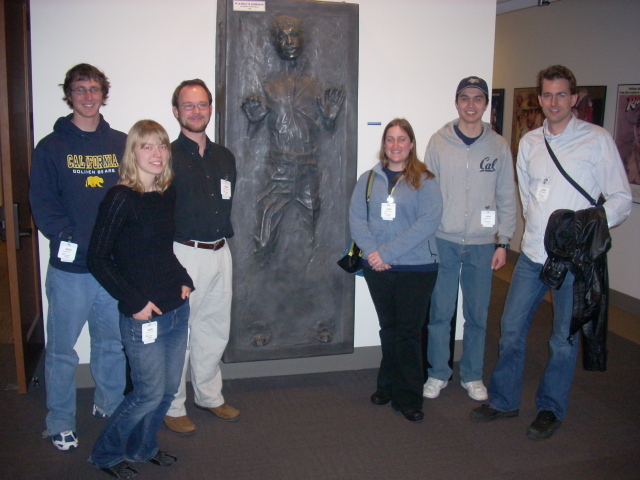
People

|

|

|

|

|

|
|
|
|
Latest News: Team Including TSU Astronomers Discover Planetary System Much Closer to Earth |

Dr. Matthew Muterspaugh
Associate Professor
Email: matthew1@coe.tsuniv.edu
Email: mmutersp@mytsu.tnstate.edu
Office: room 248 in the Research and Sponsored Programs building
Automated Astronomy Research Group
Phone: (615)277-1618
Phone: (615)963-5816
CellPhone: (617)956-2753
Fax: (615)277-1614
Dr Muterspaugh received B.S. degrees in both Physics and Mathematics from Indiana University during the span of 1996-2000, during which time he drafted the "Matthew Muterspaugh/Bryan Cogswell Board of Equality and Diversity." As an undergraduate, he worked with Dr. Robert E. Pollock, the distinguished Professor of Experimental Nuclear Physics at Indiana University, on Particle Accelerator and Non-neutral Plasma research. He recieved his Ph.D. in Physics from the Massachusetts Institute of Technology ("Binary Star Systems and Extrasolar Planets.") for the span of 2000-2005, during which time he was awarded a Michelson Fellowship for graduate research in optical interferometry.ref
Following his time at MIT, Muterspaugh became a post-doctoral scholar at the California Institute of Technology Department of Geological and Planetry Sciences. After which, he worked with the University of California, Berkeley, Space Sciences Laboratory under the Townes Postdoctoral Fellowship. Presently, he is employed as a professor at Tennessee State University.
Professor Muterspaugh's interest in optical interferometry led to a collaboration project with NASA's Palomar Testbed Interferometer with the clever acronym PHASES, emphasising the phase-referencing capabilities of the interferometer. The PHASES project offers a novel technique for detecting and examining Nemesis star systems; systems whereby a large star is orbited at a distance by a smaller star rather than by just planets. Muterspaugh pursued another collaboration with the Palomar Observatory to find Earth-sized planets using a technology called Externally Dispersed Interferometry.

Dr. Matthew Muterspaugh and students at Lucasfilm's Letterman Digital Arts Center, home of Industrial Lights and MagicYet another cleverly acronymed study, project TATOOINE, was an attempt to detect and examine Circumbinary systems. Unlike Nemesis systems whereby a second star orbits the first like a distant planet, in Circumbinary systems both stars are so close together that planets and asteroids orbit around them almost as if they were a single star. The project was named to reference a Circumbinary planet from popular culture; the fictional planet of Tatooine from the Star Wars series. The project made use of the California and Carnegie Extrasolar Planet Search team's equipment at Lick Observatory and in collaboration with Maciej Konacki of project Solaris.
Publications via Astrophysics Data System; (at least 101 available)
Publications via astroph database; (at least 41 available)
Publications via Microsoft AcademicSearch; (at least 85 available)
Copyright ⓒ [Tennessee State University, Center of Excellence in Information Systems]. All rights reserved